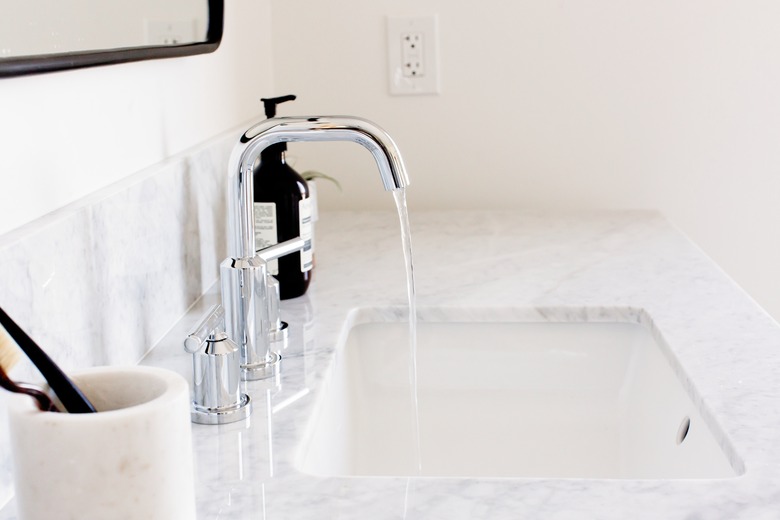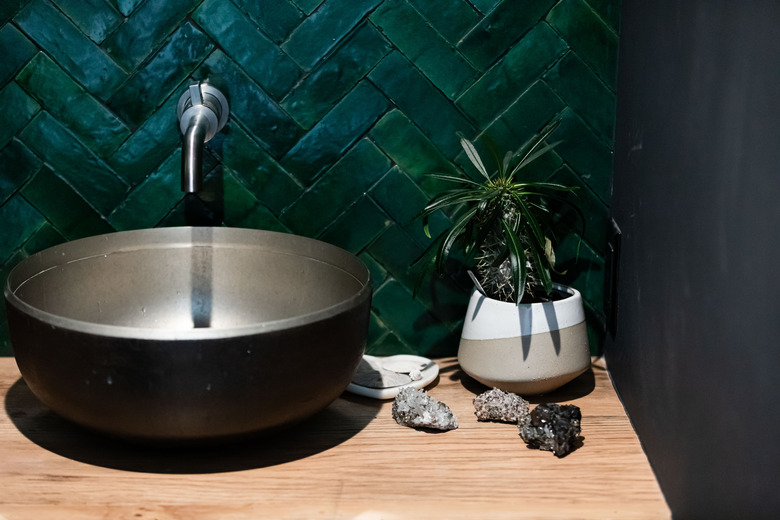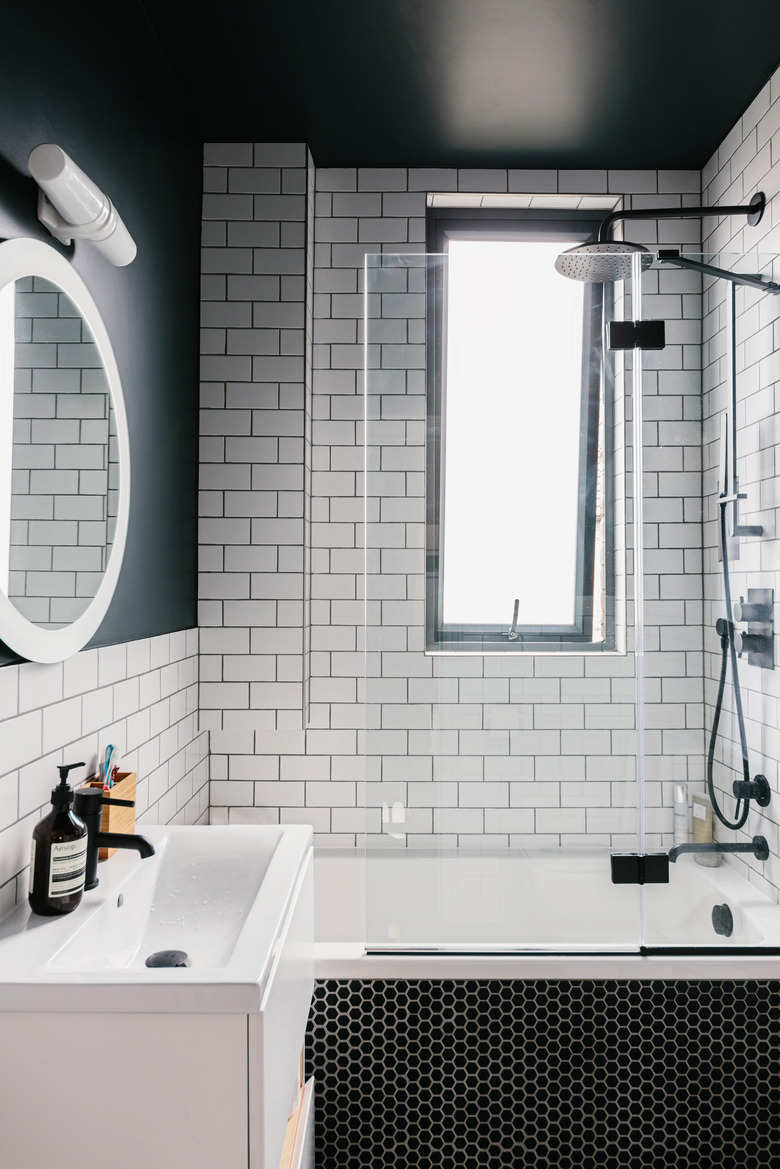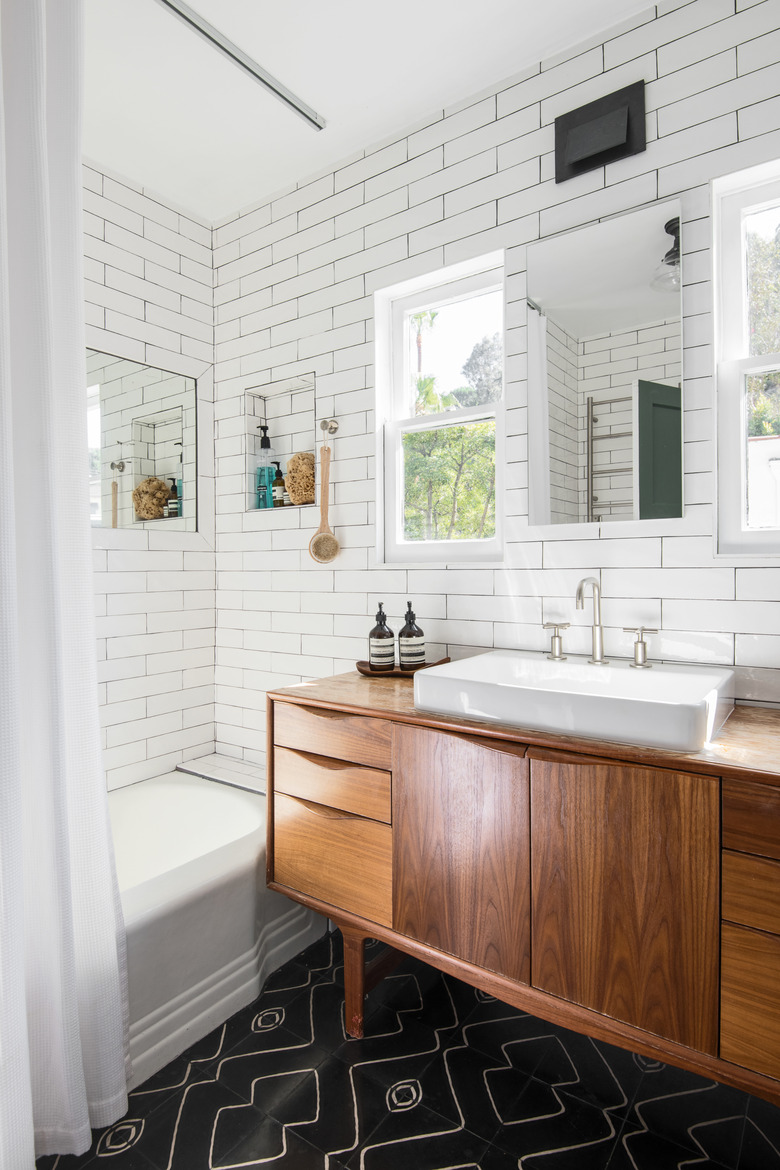Choosing A Sink For Your Bathroom Remodel
We may receive a commission on purchases made from links.
A new sink is a key element of nearly all bathroom remodel projects, and understanding your options is a critical element of the planning process. The bathroom sink is a highly visible element, so choosing a style that appeals to you is essential. Just as important is the functionality since the bathroom sink along with the toilet is the fixture that gets the most use in the bathroom.
No bathroom remodel will be functional or satisfying unless it includes a sink that is both attractive and practical. With that in mind, there are a surprisingly large number of considerations to keep in mind when it comes to choosing a sink (or sinks) for your bathroom remodel.
Bathroom Sink Configuration Styles
Bathroom Sink Configuration Styles
The first decision you'll need to make is the basic configuration of the sink. The most common form is the vanity-mounted sink, in which the sink is mounted in or on the countertop that rests on a vanity base cabinet. The vanity cabinet typically has a space below the sink basin that is enclosed by doors and usually a stack of drawers along one or both sides of the doors. This is an extremely practical style since it hides the plumbing connections and also provides storage space. A vanity-style configuration can make use of several sink styles, including drop-in, undermount, vessel and farmhouse (apron) sinks.
A newer style of vanity that is popular in bathrooms that have a more contemporary design is an open-shelved vanity in which towels and other items can be stored visibly on shelves below the sink basin. The plumbing connections are normally left exposed on this type of vanity.
A key advantage of a conventional vanity cabinet and sink setup is that it is the only configuration that readily adapts to double-sink basins placed side by side. This popular configuration requires a very long vanity cabinet, normally at least 6 feet in length. It also requires a bathroom that is spacious enough to accommodate such a large vanity as well as two users.
Other mounting styles for bathroom sinks include:
- Wall-hung sinks: This utilitarian configuration features a sink that simply hangs in space from a firmly mounted wall bracket. The plumbing connections are left exposed with this style. It is a good choice where space is limited. There are low-profile forms that take up very little room in a bathroom and even sinks that are shaped for the small, triangular shape of a room corner.
- Pedestal sinks: These highly ornamental sinks appear to rest on a single pillar or pedestal, but in reality, they are actually wall-hung on a mounting bracket with a decorative pedestal that sits below the sink basin to serve an ornamental function. These sinks tend to be elegant and classic in style, and the pedestal serves to hide the drain connections.
- Console sinks: This is another variation of the wall-mount sink in which the sink is integrated with two or four legs in a single unit. Some console sinks are entirely open below the basin, while others have open shelving built in. These sinks typically have a rather wide, flat space built in around the basin, serving as countertop space. Many are made from vitreous china or porcelain enamel with highly decorative sculpted legs, also made of china or porcelain.
Vanity Sink Variations
Vanity Sink Variations
Within the most popular category, vanity sinks, there is a range of options:
- Drop-in sinks: This very common type fits into an opening cut into the countertop. There will always be a raised lip where the edge of the sink rests on the countertop. This is a very easy type for DIYers to install. These sinks are also known as top-mount or self-rimming sinks.
- Undermount sinks: This type is mounted beneath the countertop along the edges of the countertop cutout. It is therefore suitable only for solid-surface, stone or engineered-stone countertops and not for laminate or ceramic tile countertops. This type is normally secured with brackets and/or adhesive, and DIY installation is more complicated than for drop-in sinks. A recent innovation is for manufacturers to sell units in which the sink basin is already attached to a countertop with a cutout. Although technically this is an undermount sink, its installation more closely resembles that for an integral sink because the sink is already installed.
- Integral sink/countertops: With this style, the sink basin is built right into the countertop unit with openings for the faucets already drilled into the countertop behind the basin. This style is most often found with solid-surface, cultured marble and quartz countertops. While installation is fairly simple — the entire unit is purchased and simply set in place atop the vanity — these units can be very heavy, requiring at least one helper to move and position them.
- Vessel sinks: This is a highly ornamental, decorative sink that sits raised above the vanity countertop with a small hole that accommodates the sink drain. These sinks often require a wall-mounted faucet. Many types are round basins made of tempered glass, but there are also square and rectangular china or porcelain vessel sinks in this style.
- Farmhouse/drop-apron sinks: Shortly after farmhouse sinks regained popularity in the kitchen, smaller versions of the same style became available for bathrooms. These sinks sit within a large, wide cutout made in the countertop and vanity cabinet. Normally made of vitreous china or porcelain enamel, these sinks have a front apron that extends well down in front with a backsplash portion that extends partway up the back wall. These sinks are best for very large bathrooms, and they are best suited for rustic decorating styles.
Single-Basin vs. Double-Basin Sinks
Single-Basin vs. Double-Basin Sinks
Early in your planning process, you'll need to decide if you want a single sink basin or double basins in your vanity countertop. For some time, it's been the trend in large master bathrooms to include two side-by-side sink basins, but it's worth asking how necessary this really is. If your bathroom regularly sees use by two people at the same time, double basins make perfect sense. If not, you may want to consider keeping a larger countertop space by including just one bathroom sink in the vanity.
If you do want double sinks, make sure your vanity is long enough to accommodate them. The International Plumbing Code (Section 405.3.1) advises that there must be at least 30 inches between sink basins (measured from the center of the drain opening) and at least 15 inches between the edge of the sink and the nearest side wall. In practice, this means that a vanity needs to be a minimum of 6 feet long to comfortably accommodate two sink basins.
DIY Considerations When Choosing Sinks
DIY Considerations When Choosing Sinks
If you plan to install the bathroom sink yourself, mounting style and other sink variations will need to be considered, as some types of sinks are easier to install than others. Within the vanity-mounted sink category, nearly all DIYers find that drop-in and integral sinks are quite easy to install, although integral sink/countertop units may require helpers because of the weight. Vessel sinks tend to be slightly more complicated. Farmhouse sinks are the most difficult since they require carpentry modifications to the vanity cabinet unless you can find a commercial vanity cabinet that is already configured to hold a farmhouse sink.
DIYers should have a moderate level of confidence and experience with basic plumbing work before tackling installation. However, installing a new sink is often easier than replacing an old sink and faucet provided the rough-in plumbing work is already done. Some degree of carpentry skill may also be required since the job often requires cutting openings and holes in the countertop or making minor modifications to the vanity.
Bathroom Sink Materials, Shape and Size
Bathroom Sink Materials, Shape and Size
You will also face a choice of materials when you choose a sink. Materials used for sinks include vitreous china, enameled cast iron, solid-surface material, porcelain enamel, quartz, natural stone, tempered glass and various metals such as stainless steel and copper. By far, the most common material used for bathroom sinks is vitreous china, which is used in all styles and types of sinks.
Bathrooms sinks are available in round, oval, square or rectangular shapes. Unless you are installing a new sink in an existing countertop, the shape and size of the basin is purely a personal choice. Round sinks are usually 16 to 20 inches in diameter, while rectangular sinks tend to be 19 to 24 inches wide and 16 to 23 inches front to back. Most basins are 5 to 8 inches deep. There are also unique sizes available for special circumstances.
Compatibility Between Faucet and Sink
Compatibility Between Faucet and Sink
The faucet and bathroom sink are so intertwined that they really should be chosen as part of the same purchase. Most bathroom sinks are predrilled with one or three faucet holes. Three-hole models are designed for faucets with hot- and cold-water valves mounted separately from the spout, while one-hole sinks are designed for single-handle faucets. Three-hole models are available with the valve holes mounted about 4 inches apart or 8 inches apart for widespread faucets.
Some sinks have no faucet holes at all. These are intended for use with either wall-mounted faucets or countertop-mounted faucets.
Showrooms in home improvement centers and design stores often show mock sink/faucet/vanity setups where you can see how a particular faucet looks with a sink. Manufacturer's brochures can also be a good place to get ideas on how to match faucets with sinks. If possible, it's a good idea to choose a faucet that is part of a design collection since this allows you to choose other hardware — shower heads, towel bars, etc. — that match the faucet's style.
Estimating Bathroom Sink Costs
Estimating Bathroom Sink Costs
Believe it or not, it's possible to pay thousands of dollars for a bathroom sink, and even at big-box home improvement centers, costs can range from about $40 for a small, round drop-in sink made from vitreous china to nearly $2,000 for a designer vessel sink in a hammered copper finish. In function, bathroom sinks are very simple fixtures, and just about any sink will serve adequately. How much you spend on your sink is entirely a matter of the value you place on style and aesthetics.
In general, drop-in or undermount sinks will be the most affordable, and it's rarely necessary to spend more than $100 to $300 for a perfectly attractive sink. Pedestal and console sinks are usually somewhat more expensive simply because the pedestal or legs require more material. Good pedestal sinks start at about $200, while good console sinks begin at roughly $300. Integrated sink/countertop units are understandably more expensive but remember that you won't need to buy a separate countertop.
Shopping Tips for Bathroom Remodeling
Shopping Tips for Bathroom Remodeling
There are some key issues to keep in mind when shopping for and buying a bathroom sink:
- Double check measurements for the sink to make sure it will fit your vanity and countertop.
- Make sure the faucet holes in the sink match the faucet you want.
- If you are buying online, make sure you understand the shipping costs. Sinks can be very heavy, which can involve surprisingly large costs for shipping.
- If you are picking up the sink yourself, check its weight. Some sinks, especially integrated sink/countertop units, can weigh hundreds of pounds.
- Uncrate the sink and check for damage immediately after buying it. Most sinks are rather brittle, and they can be cracked or broken during shipping.



